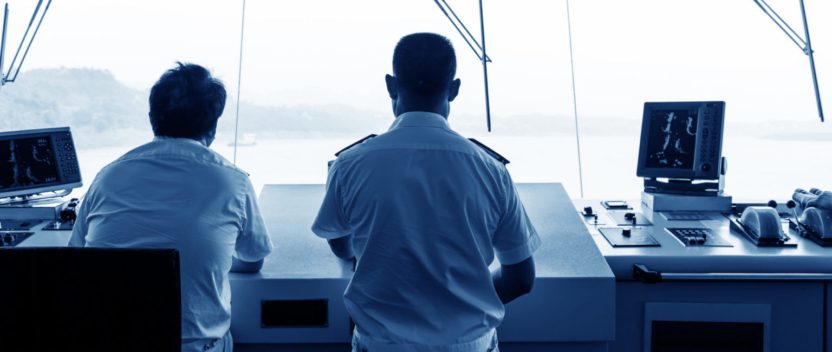A closer inspection of ECDIS detentions
An apparent rise in the number of ECDIS-related detentions by Australian Port State Control agency AMSA this year may have hit the headlines, but closer inspection reveals more to the story than meets the eye.
Though AMSA already has a reputation for being a stickler on vessel safety, its ire was raised when a ship it detained had a trainer flown from Hong Kong to get the crew up to speed.
This done, the ship was duly released, but AMSA kept up the pressure, detaining eight ships in five months. The message was clear: you should expect to be competent on ECDIS before you come to an Australian port and demonstrate it while you are there.
The question this poses is not why AMSA, along with other port states are focussing on ECDIS, but why they should need to. So long has been the process of mandation and implementation that the casual observer might believe that the well-documented teething problems with ECDIS are by now, non-issues.
Not so. In fact, by some measures, they have never been as important – or the standard of competence as varied – as it is now. In a downturn that sees owners scraping by, cutting training budgets and deferring maintenance, the risk is genuine that more, not fewer incidents will be reported.
The process quietly took a step forward last month, when another milestone was passed, as existing cargoships above 20,000 gt joined the ECDIS-mandated fleet.
Having worked through the passenger ships and tankers considered ‘blue chip’ for meeting oil company vetting or passenger safety requirements, this brings ECDIS into the mainstream of the shipping fleet.
Put bluntly, the industry is now getting down to shipping companies whose officers may not have the skills or competence required for what remains a critical piece of safety equipment.
Harry Gale of the Nautical Institute is quick to praise the competence of AMSA PSC inspectors among others, but says the reports the NI receives suggest that not all inspecting personnel are as up to speed on ECDIS as they should be.
But this pales into insignificance compared to the feedback the Institute hears of ECDIS competence among serving officers. Gale says information received indicates in some cases an ‘appalling’ lack of competence among serving crews. These are seafarers who will have done their generic and familiarisation training but still have ‘nowhere near enough experience to get fully up to speed’.
The problem as Gale sees it is that grasping the basics of using ECDIS is still a challenge and – as the AMSA detentions suggest – there is a temptation to complicate rather than simplify usage.
“The mariner has got to make a judgement call about what information they want to be shown. When you were using paper charts, the cartographer made that decision,” he says. “Now the guy on the ship is in control and to be honest a lot of them have no idea what they really need to see, so they muddle along. The master might say OK because he perhaps doesn’t know as much about it as he should.”
This suggests the need is greater than ever for an ECDIS ‘S-Mode’ the NI’s proposed ‘reset button, which would put every ECDIS into a Standard display mode, meaning any user could immediately gain situational awareness.
The process has been long delayed and Gail says there is movement towards a version of S-Mode. “Those people who were against it before see the need for some sort of S-Mode, are coming around to the idea, though it’s not what we envisaged.”
The competence problem is not necessarily about ability but rather the process, says Gale. ECDIS is a computer software program and to be used properly it needs to be part of daily routine.
Gale relates a story from a college lecturer who trains cadets and serving seafarers in generic or familiarisation courses. Fresh from the classroom, the next ship they join might or might not be an ECDIS ship. A return to navigating on paper means they will come back for the next phase of training having had no practical experience in the meantime.
“If you are using ECDIS properly it’s brilliant, there are no two ways about it. But skills will fade if a mariner goes onto a ship that doesn’t have it. With any software, it’s useless, unless you keep using it.”
Partly in response to this issue, in 2012 the Nautical Institute published industry guidelines to ECDIS familiarisation which remain an essential text. Several companies have since included them in their SMS and Gale says the industry needs to keep pushing this onboard and ashore as best practice.
There are still plenty of clouds on the horizon – and some are closer than others. Gale says there is a perception that come 2018, the ECDIS mandate process will be done and dusted, but this is wishful thinking.
The current issue is the combination of ECDIS and non-ECDIS ships sailing and something which is unlikely to change soon. Even by that date, existing cargo ships under 10,000 gt and new ships under 3,000 gt will still be non-mandatory with ECDIS.
“They may be driving around with paper charts but are more likely to be using a [non mandatory] Electronic Chart System,” he adds. “The worrying thing is that there might be paper at the back of the bridge but instead of using the ECS as a backup or aid to awareness, it’s what they could be driving the ship on.”


